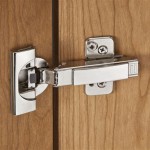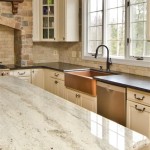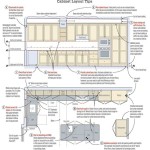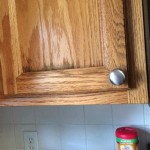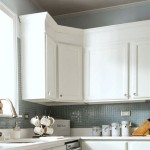Best Wood Finish For Kitchen Cabinets: A Comprehensive Guide
Selecting the appropriate wood finish for kitchen cabinets is a critical decision that balances aesthetic preferences with practical considerations. Kitchen cabinets endure significant wear and tear, exposure to moisture, and frequent cleaning. Therefore, the chosen finish must not only enhance the beauty of the wood but also provide durable protection against these elements. This article explores various wood finishes suitable for kitchen cabinets, detailing their characteristics, advantages, disadvantages, and application techniques, enabling informed decision-making for both homeowners and professionals.
The longevity and appearance of kitchen cabinets are significantly impacted by the quality and type of finish applied. A poorly chosen finish can lead to premature wear, unsightly stains, and ultimately, costly replacements. Conversely, a well-selected and properly applied finish will safeguard the wood, maintain its visual appeal, and extend the lifespan of the cabinets for years to come.
Understanding the Key Considerations for Kitchen Cabinet Finishes
Before delving into specific types of wood finishes, it's essential to establish the key criteria that dictate the suitability of a finish for kitchen cabinets. These factors encompass durability, resistance to moisture and chemicals, ease of cleaning and maintenance, application requirements, and aesthetic properties.
Durability: Kitchen cabinets are subjected to constant use, including opening and closing doors and drawers, handling of utensils and cookware, and potential impacts. A durable finish must withstand these daily stresses without scratching, chipping, or wearing away. The durability is often measured by factors like film hardness and abrasion resistance.
Moisture Resistance: The kitchen environment is inherently humid due to cooking, dishwashing, and other activities. Wood is susceptible to water damage, which can cause warping, swelling, and discoloration. Therefore, the chosen finish must provide a reliable barrier against moisture penetration.
Chemical Resistance: Kitchen cabinets are frequently exposed to various cleaning agents, cooking oils, and food spills. The finish must resist damage from these substances, preventing staining, discoloration, and degradation of the protective layer. The finish's chemical resistance is particularly important around the sink and cooking areas.
Ease of Cleaning and Maintenance: Kitchen cabinets require regular cleaning to maintain hygiene and appearance. The finish should be easy to clean with common household cleaners without damaging the surface. Additionally, the ability to repair or refinish the cabinets without extensive labor is a significant advantage.
Application Requirements: Different finishes require varying levels of skill and equipment for proper application. Some finishes are easily applied by homeowners with basic tools, while others necessitate professional application due to their complexity or toxicity. Factors such as drying time, number of coats required, and ventilation needs should be considered.
Aesthetic Properties: The finish should complement the overall style and design of the kitchen. Considerations include the desired sheen level (matte, satin, semi-gloss, gloss), color, and the ability to enhance the natural grain of the wood. The finish should also be compatible with the type of wood used for the cabinets.
Exploring Different Types of Wood Finishes for Kitchen Cabinets
Numerous wood finishes are available, each with its own set of characteristics and advantages. Understanding the properties of each type is crucial for selecting the most suitable option for kitchen cabinets. The following sections detail some common and effective finishes.
Polyurethane: Polyurethane is a synthetic resin finish known for its exceptional durability and resistance to water, chemicals, and abrasion. It forms a hard, protective layer that is ideal for high-traffic areas like kitchens. Polyurethane is available in both oil-based and water-based formulations.
Oil-Based Polyurethane: Oil-based polyurethane offers superior durability and a richer, warmer tone compared to water-based options. However, it has a longer drying time, emits stronger odors, and requires the use of solvents for cleanup. It tends to amber or yellow slightly over time, which can enhance the wood's natural color but may not be desirable for lighter-colored cabinets.
Water-Based Polyurethane: Water-based polyurethane is favored for its low odor, fast drying time, and easy cleanup with water. It typically provides a clearer, less yellowing finish than oil-based versions. While generally less durable than oil-based polyurethane, advancements in formulation have significantly improved its performance.
Lacquer: Lacquer is a fast-drying finish that provides a smooth, durable surface. It is available in various sheen levels and is known for its clarity, allowing the natural beauty of the wood to shine through. Lacquer is often used in professional cabinet shops due to its ease of application with spray equipment and its ability to be easily repaired or refinished.
Nitrocellulose Lacquer: Nitrocellulose lacquer is a traditional type of lacquer that is still widely used. It offers excellent clarity and dries quickly, but it is also flammable and emits strong fumes during application. It is generally less durable than newer lacquer formulations.
Pre-catalyzed Lacquer: Pre-catalyzed lacquer is a more durable version of nitrocellulose lacquer that contains a catalyst to improve its resistance to chemicals and abrasion. It is a popular choice for kitchen cabinets due to its balance of durability, ease of application, and aesthetic appeal.
Varnish: Varnish is a traditional finish that provides a durable, water-resistant coating. It is available in various formulations, including alkyd varnish, phenolic varnish, and spar varnish. Varnish is often used for marine applications due to its excellent water resistance, making it a suitable option for kitchen cabinets.
Alkyd Varnish: Alkyd varnish is a general-purpose varnish that offers good durability and water resistance. It is relatively easy to apply and is available in various sheen levels. However, it may yellow over time and is not as resistant to chemicals as some other finishes.
Phenolic Varnish: Phenolic varnish is a more durable type of varnish that is highly resistant to water and chemicals. It is often used for exterior applications, but it can also be used on kitchen cabinets for added protection. It typically has a darker color than alkyd varnish.
Conversion Varnish: Conversion varnish is a two-component finish that provides exceptional durability and resistance to chemicals and moisture. It is typically used in professional cabinet shops due to its complex application process and the need for specialized equipment. Conversion varnish offers a hard, long-lasting finish that is ideal for high-use kitchen cabinets.
Paint: While not strictly a "wood finish" in the traditional sense, paint provides a durable and versatile option for kitchen cabinets. High-quality paints designed for cabinets offer excellent adhesion, resistance to moisture and staining, and easy cleanup. Paint is available in a wide range of colors and sheen levels, allowing for customization to match any kitchen décor.
Acrylic Latex Paint: Acrylic latex paint is a water-based paint that is easy to apply, low in odor, and cleans up with water. It offers good durability and resistance to moisture, making it a suitable choice for kitchen cabinets. It is available in various sheen levels, including matte, satin, semi-gloss, and gloss.
Alkyd Paint: Alkyd paint is an oil-based paint that provides excellent durability and a hard, smooth finish. It is more resistant to scratches and stains than acrylic latex paint, but it has a longer drying time, emits stronger odors, and requires the use of solvents for cleanup.
Preparation and Application Techniques
The success of any wood finish depends not only on the quality of the product but also on the proper preparation and application techniques. Thorough preparation ensures that the finish adheres properly and provides optimal protection. The following steps outline the essential aspects of preparing and applying wood finishes to kitchen cabinets.
Surface Preparation: Thoroughly cleaning the cabinet surfaces is the first step. Remove all dirt, grease, and existing finishes. Sanding the wood is crucial for creating a smooth, even surface and providing "tooth" for the new finish to adhere to. Start with a coarser grit sandpaper (e.g., 120-grit) and gradually move to finer grits (e.g., 220-grit) to achieve a smooth finish. After sanding, remove all dust with a vacuum cleaner, followed by a tack cloth.
Priming (if required): Priming is recommended for painted cabinets and can also be beneficial for clear finishes to improve adhesion and prevent tannin bleed-through from the wood. Use a high-quality primer that is compatible with the chosen finish. Apply the primer in thin, even coats, following the manufacturer's instructions. Allow the primer to dry completely before sanding lightly with fine-grit sandpaper.
Application Methods: The choice of application method depends on the type of finish, the size and complexity of the cabinets, and the desired finish quality. Common application methods include brushing, spraying, and wiping.
Brushing: Brushing is a suitable method for applying finishes to small areas or intricate details. Use a high-quality brush designed for the specific type of finish being applied. Apply the finish in thin, even strokes, following the grain of the wood. Avoid applying too much pressure, which can cause brush marks and uneven coverage.
Spraying: Spraying provides a smooth, even finish and is ideal for large surfaces or complex shapes. Use a spray gun and compressor to apply the finish in thin, overlapping coats. Proper ventilation and safety precautions are essential when spraying finishes. Professional spraying equipment is often needed, especially for lacquer and conversion varnish application.
Wiping: Wiping is a simple method for applying oil-based finishes, such as varnish and oil-based polyurethane. Apply a generous amount of finish to the surface and then wipe off the excess with a clean cloth. This method allows the finish to penetrate the wood pores and provides a natural, low-sheen finish.
Number of Coats: Most finishes require multiple coats to achieve adequate protection and a consistent appearance. Follow the manufacturer's recommendations for the number of coats and drying time between coats. Lightly sand between coats with fine-grit sandpaper to remove any imperfections and improve adhesion.
Drying and Curing: Allow the finish to dry completely before handling the cabinets. The drying time will vary depending on the type of finish, temperature, and humidity. Some finishes, such as conversion varnish, require a curing period of several days to achieve maximum hardness and durability.
Factors Affecting Finish Selection
Choosing the best wood finish hinges on several key considerations beyond the finish itself. These factors influence how the finish will perform and appear over time.
Wood Type: Different wood species react differently to various finishes. Some woods, like maple and birch, have tight grain patterns that require careful sanding and priming to avoid blotching. Others, like oak and ash, have open grain patterns that can be filled with wood filler or grain filler to create a smoother surface. The natural color and grain of the wood will also affect the final appearance of the finish.
Desired Aesthetic: The desired look and feel of the kitchen will influence the choice of finish. For a modern, minimalist kitchen, a smooth, even finish with a low sheen level may be preferred. For a more traditional or rustic kitchen, a finish that enhances the natural grain and texture of the wood may be more appropriate. The color and sheen level of the finish should complement the overall design of the kitchen.
Budget: The cost of different finishes can vary significantly. High-quality finishes, such as conversion varnish, typically cost more than less durable options, such as inexpensive paints. The cost of application should also be considered, as some finishes require professional application, which can add to the overall expense.
Environmental Considerations: Some finishes contain volatile organic compounds (VOCs) that can be harmful to the environment and human health. Water-based finishes generally have lower VOC content than oil-based finishes. Consider using low-VOC or zero-VOC finishes to minimize environmental impact and improve indoor air quality.

Best Finishes For Kitchen Cabinets Cabinet Doors N More

Best Wood For Kitchen Cabinets Cabinet Materials Custom

Light Wood Finish Shaker Kitchen Diamond Cabinetry

7 Types Of Kitchen Cabinet Finishes Kings

What S The Best Finish For Kitchen Cabinets Wood
:strip_icc()/101903247-58c480d08b8a4aa68c85f81f783911b6.jpg?strip=all)
Wood Cabinet Ideas To Consider For Your Kitchen Remodel

Staining Kitchen Cabinets Pictures Ideas Tips From

7 Types Of Kitchen Cabinet Finishes Kings

Kitchen Cabinet Finishes For Your Home Designcafe

Painted Wood Cabinets Vs Stained A Questionnaire Kylie M Interiors
Related Posts

